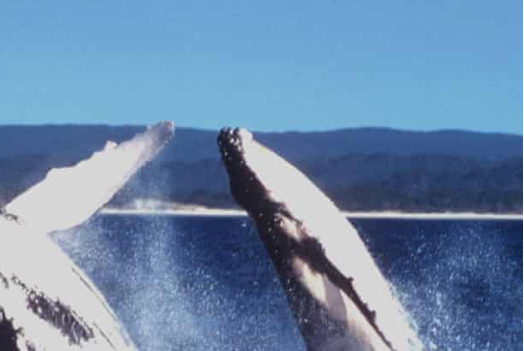Blogs
Why are we seeing Whales around St. John?

Approximately 80% of the North American humpback whale population migrates to the Silver Banks yearly, which is 355 miles WNW from St. John. This event happens between January and April in most seasons. You can see them breaching, slapping the surface with their fins, and playing in the shallows around Pillsbury Sound throughout this time.
The whales go to the Silver Banks as part of their mating process. This area has become a designated marine sanctuary to protect the courtship and calving activities that support their population.
Most humpback whales prefer to stay in deep water. The Puerto Rico Trench is in the area, dropping to almost 27,500 feet at its deepest point. Those living in St. John call it the “North Drop,” and it is a 20-mile trip from the north end of Pillsbury Sound.
There is also a “South Drop” about eight miles in that direction of the island, where the water reaches almost 10,000 feet in depth.
How Do I Know If I’ve Spotted a Humpback Whale?
You’ve likely seen a humpback whale when you spot a tall, bush-shaped blow in the water. The odds are even more in your favor if you’re near Pillsbury Sound between January and April. This spray pattern occurs because there are two nostrils where the whale blows water out when it breaches the water.
Other marine creatures breach the water and offer a spout, but it tends to look more like a tower or fountain compared to the humpback whale. You may have seen another whale species or a dolphin in those circumstances.
Many people see humpback whales by spotting their tails. This behavior means it is probably diving, so it could be up to ten minutes before you see it again. Each side is called a “fluke,” and these are like their fingerprints. No two individuals are exactly alike, which is how scientists can identify specific individuals in a pod.
When identifying humpback whales around St. John, you’ll want to look for these specific attributes.
- Pigmentation. Whales have unique pigment patterns on the ventral surface that are present at birth. Their flukes can be all white or all dark, although most individuals have a combination of those colors. Yellow indicates algae is on the tail.
- Distinctive Scars. Humpback whales often have circular and linear scars. These markings come from barnacles and even orca attacks.
- Tailing Edge Shape. Humpbacks often have noticeable serrations at the end of their tail, which makes it easier to identify specific individuals while in the water.
Another way to know if you’ve spotted a humpback whale around St. John is by locating the dorsal fin. They’re often small, unlike what you’d see with orcas or some shark species.
Humpback Whales Are Part of the Baleen Family
Scientists have identified 14 species of baleen whales, including humpbacks. That means they don’t have any teeth.
The baleen is made from keratin, which is the same material that creates human hair and fingernails. It can be over ten feet long in some of the largest whales!
Humpbacks are unique because they have throat grooves that let their mouths expand and balloon as they consume seawater to get some food. The baleen filters and traps the prey inside the mouth, with krill, plankton, and small fish being popular choices. Maintaining their health can take up to 3,000 pounds of food per day.
A humpback whale can live for up to 90 years, and many of them make the migratory trip to St. John annually. Once the mating season is over, they return to the colder waters.
Why Do Humpback Whales Choose St. John?
Humpbacks love deep water, but they also prefer to be where the climate is warm. You can spot them in Coral Bay and most offshore areas around the islands during the winter months, sometimes traveling as much as 16,000 miles to reach the site.
The waters around St. John function as a natural amplifier for the whale’s song. Only the males sing, but they can be heard over 40 miles away when they start their melodies. You’ll find an interesting video below that offers some unique examples of their beautiful calls.
Federal laws, including the Marine Mammal Protection Act and the Endangered Species Act, require whale observation to occur from at least 100 yards away. Additional information about humpback whales around St. John is available from National Geographic, Whale and Dolphin Conservation, and the National Oceanic and Atmospheric Administration.
